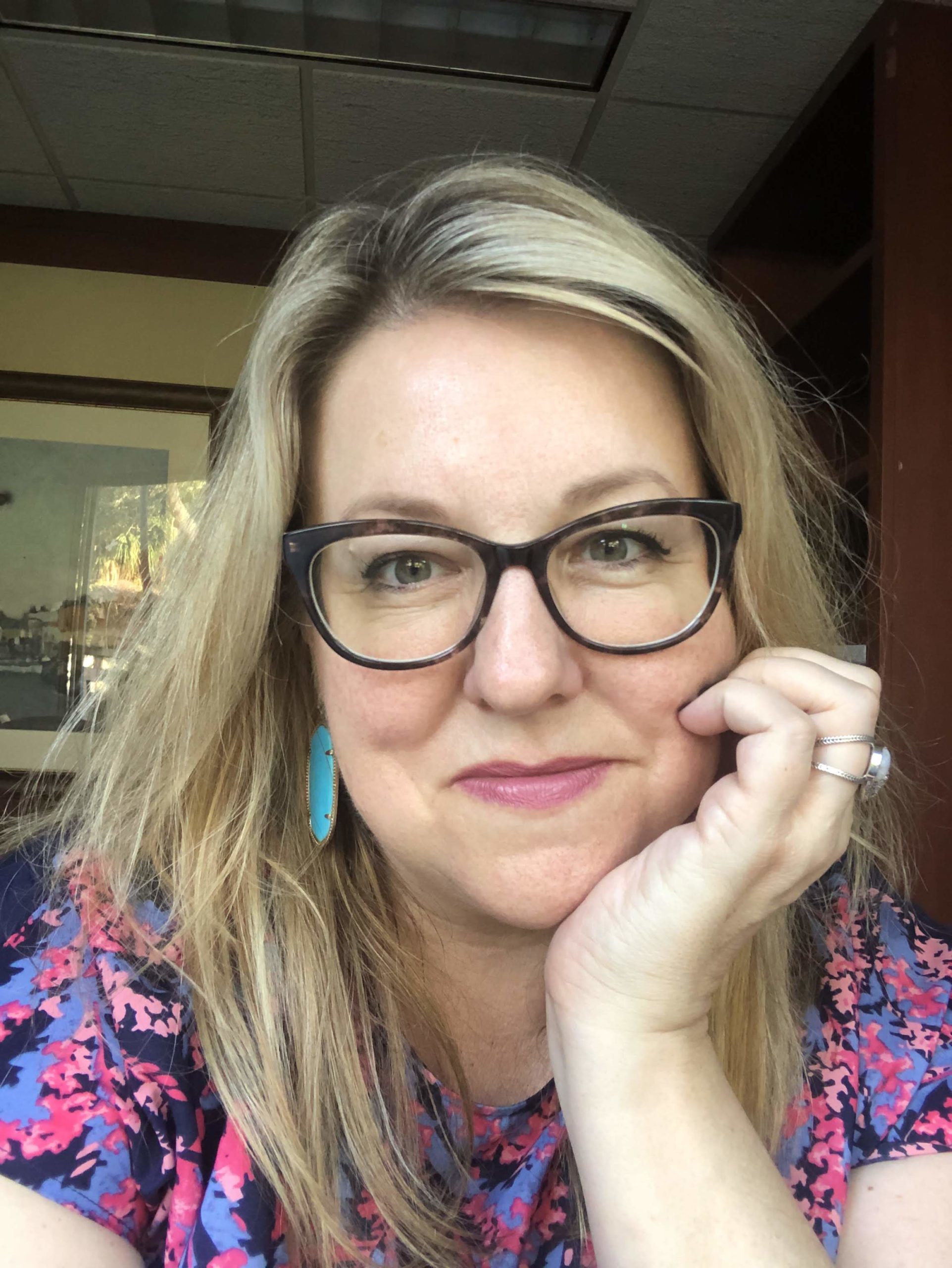This week, Poynter launches its latest version of Transforming Crime Coverage Into Public Safety Journalism, a 7-month-long course designed to help newsrooms quite literally transform the way they cover police and public safety in their communities.

McBride
This is the second iteration of the program after a pilot in 2022. The course is led by two instructors, Kelly McBride, Poynter senior vice president and chair of the Craig Newmark Center for Ethics and Leadership, and Cheryl Thompson-Morton, Black Media Initiative Director for the Center for Community Media at the Newmark Journalism School.

Thompson-Morton
I interviewed McBride to find out more about why this topic has become her passion and why she thinks it’s important that newsrooms understand that many of them have been an unwitting public relations arm for law enforcement for decades. Apply here for this online seminar. Applications are due April 21.
Barbara Allen: The thing that’s interesting to me about this course is the verb that you chose for the title, which is transforming crime coverage.
Kelly McBride: I chose that verb because I realized after working with just a handful of newsrooms how hard this work really is. Crime coverage is almost part of the DNA of local newsrooms — almost everybody in the newsroom participates in it in some way or another. And so it’s really hard to change how you do it because you have to do a systemwide change. As I’ve talked to newsrooms that have made the change — those that have done it well — it took a long time and a lot of effort, and a lot of people in the newsroom actively participating in the work. All of your organizational habits have to change in order to change your crime coverage.
Allen: Can you tell me a little bit about how you came to realize that you really wanted to dedicate yourself to this kind of training?
McBride: I was a police reporter for years. I covered the gamut, from small-town to metropolitan center. As journalists, we are disingenuous about why we cover crime. We tell ourselves that we cover it so that the public can keep itself safe. And yet the information that we give them doesn’t help anybody keep themselves safe. There’s a huge disconnect between why we say we cover crime and how we actually cover crime. That disconnect makes journalism part of the problem when it comes to reforming our criminal justice system, when journalism really should be part of the solution.
Allen: Why is this work important to you personally?
McBride: I really do believe that journalism is important to democracy. And if that is going to continue to be true, the journalism itself has to be good. Crime news, for the most part, is not good. It’s either mediocre or outright harmful. And it’s such a substantial portion of our daily news report that we can’t continue to say we are supporting democracy when we have this deeply flawed approach to a really big portion of the work that we do.
Allen: Can you point to an example of a journalist or a newsroom where you saw this training really pay off, where you really saw it working?
McBride: Absolutely. One metropolitan newspaper learned through participating in the pilot project that there were so many reflexive decisions that they were making that were undermining their desire to transform their coverage. (In one example), they realized that they use mug shots because they need art with their stories because on the internet, stories that have art with them do a lot better. They recognized that as they had transformed to digital, they actually created a pattern where they were routinely attaching mugshots to stories. And that was just one of many habits that had developed around crime coverage. And that’s in a newsroom where they were already further down the path than most newsrooms when it came to rethinking how they covered cops and courts.
Allen: Tell me something you learned from working with these newsrooms. They’re learning from you. What did you learn from them?
McBride: I learned that many, many newsrooms get a policy reform 10 yards from the goal line and then they can’t get it through and they slip back to old habits. You end up with a substantial number of people, including leaders in the newsroom, who agree on and do all the hard work to write a new policy. And then in order to implement a policy, you have to do three things. You have to get HR to agree to it, you have to get legal to agree to it and you have to do training. And so you’ve done all the hard work of writing a new policy, all the stakeholders are bought into it, and then it breaks down because you can’t get those three steps in place.
Allen: Why?
McBride: They’re busy. It costs money. A lot of these newsrooms don’t have in-house legal, so they have to either go up to corporate or go outside to get extra legal help, and it costs money to get that consultation done. HR in many newsrooms has been stripped bare and they’re barely keeping their heads above water, so they struggle to implement new policies. Training seems onerous when just putting out the news report is such a difficult task, because the staffs are so thin in many local news markets.
Allen: Does the training that you’re providing address this?
McBride: It does. This new course takes newsrooms through implementation.
Allen: How did you land on the guests and faculty members you’re bringing in?
McBride: It’s a combination of people who recognize and can articulate harm, and who can talk to journalists about how classic crime coverage harms a significant part of the community — people who can understand and articulate that.
I’ve got a reporter coming in who has this really great approach to accountability reporting with law enforcement agencies and government organizations. He’s not a trained investigative reporter. He’s just somebody who knows that if you just look at a bunch of documents that are publicly available, that there’s information in there that will give you insights into how your law enforcement agencies are doing their work. He’s had so many big scoops just by looking at stuff that’s publicly available. He has sources in the police department who want the police department to be better. So that’s one set of expertise.
I’ve got a woman who is an emergency room doctor who studied trauma victims, and concluded that news coverage was exacerbating their recovery — she showed how news coverage created specific individual harm to people. But she’s an advocate of journalists — she wants journalists to just change some of the things that they do when they write about victims and crime.
So it’s really a holistic approach: people who understand the communities that are most harmed by crime coverage and people who understand how journalism happens and how you could change the journalism about crime.
Allen: What kind of pushback do you get from people in newsrooms?
McBride: The most significant pushback that I get is the idea that specific incidents of crime aren’t valuable news stories. It’s because there’s a conflation of meaningful and interesting in journalism. It is often very interesting when crime happens — when people get shot, when dramatic stories unfold. But rarely are those stories meaningful when it comes to the news consumer making decisions about her own life. You don’t consume a story about a shooting and then make changes in your own life that make you safer, because that’s not the information that’s in that story.
I get a lot of pushback from people who are offended at the idea that we wouldn’t cover every shooting or, especially in a large city, every homicide. In a world of limited resources, we are often choosing to do the stories that are easy and accessible, rather than the stories that are actually helpful to our audiences. And that’s where the ethics challenge comes in. If we’re going to say that we are a critical part of democracy, we have to choose to spend our resources on stories that we think will help our audience also participate in democracy, not just be interesting or sensational.
Allen: Where do you think this kind of training is most needed? Is it more needed in newspapers or TV or radio? Where do you see the need being biggest?
McBride: Across all of local journalism. Different platforms have different habits: Television has one set of habits, traditional newspapers have another set of habits. Those habits manifest different levels of harm to the community, but they all harm the community in one way or another.
Allen: You have mentioned harm quite frequently. What are some of the specific types of harm that are being done by modern local crime reporting?
McBride: We amplify an inaccurate narrative about who is responsible for crime. We do this in a couple of different ways. We know that law enforcement has a narrative about crime that is inaccurate, that overemphasizes policing of underrepresented communities.
For example: Black people are roughly 12-13% of the general population, according to the census. And when you look at all the arrest data, Black people are arrested at twice that rate, so they’re arrested in the mid-20s. Then, when you look at news media stories about crime, Black people represent 37% of the people who are arrested, so that is an inaccuracy right there. It reinforces the inaccurate narrative of the Black criminal. Nobody sits down and says, “Hey, we’re gonna only do stories about Black criminals.” But in the system of how specific incidents of crime become news stories, there is a pattern of choices that reinforce inaccurate stereotypes. So that’s one level of harm.
The other level of harm: Police have a very large public relations arm. In allowing police to share their unchecked narrative of crime, we have forgotten that they have a motive — they get federal grants and state grants and funding that basically grow their organization, not on the actual rate of crime but on the perception of crime because it’s political. Public policy changes based on public perception of crime, and the press becomes an arm of the law enforcement public relations industry when they don’t critically challenge the law enforcement narrative.
Here’s a very specific example: In the 1990s, one pro-law enforcement social scientist began a narrative about youth superpredators, and the media was complicit in repeating that narrative over and over. As a result of that, 48 out of 50 states changed their laws, lowering the threshold at which teens were jailed with adults and tried as adults. The juvenile justice system was completely overhauled, based on the superpredator narrative. When we look back at the data now, the foundation for that super predator narrative was completely erroneous. There were not superpredators, but we literally changed the entire justice system that addresses juvenile crime in the United States, based on public perception.







